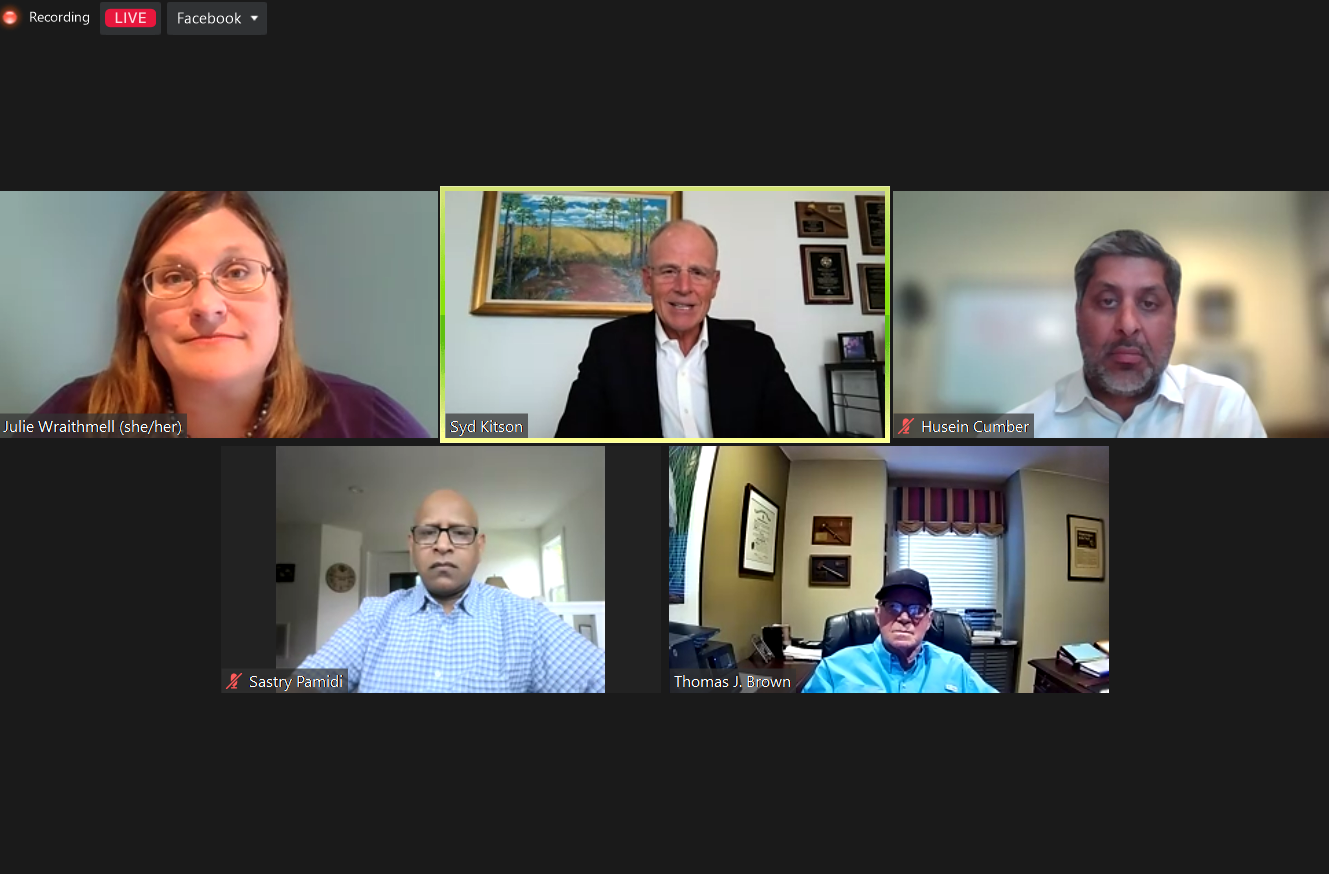Few places are as vulnerable as Florida to the challenges of climate change. Ecosystems are resilient and adaptive, but the climate is changing at a rate that makes it difficult for plant and animal species to adapt. Many species of birds and other wildlife are being forced out of their habitat ranges and, in the long term, face extinction. But solutions are all around us. From sustainable communities to artificial reef installations that create living shorelines, to renewable energy generation and next-generation transmission technology, harnessing private sector innovation to address climate change in Florida makes smart economic sense.
In July, Audubon Florida debuted its first class of Florida Climate Entrepreneurs: Private sector innovators who are in the business of helping Florida meet the challenges of climate change while creating jobs in Florida’s emerging climate economy. During a panel-based conversation led by Executive Director Julie Wraithmell with more than 125 viewers and a highly engaging Q&A session, four prominent business leaders discussed how they got their start and their vision for the future. They included:
- Syd Kitson, Chairman and CEO of Kitson and Partners; Pioneering sustainable community development.
- Husein Cumber, Chief Strategy Officer of Florida East Coast Industries (FECI); Spearheading the future of high-speed rail in Florida.
- Thomas J. Brown, CEO of Living Shoreline Solutions, Inc.; Creating productive and resilient coastal systems.
- Dr. Sastry Pamidi, PhD, Chair and Professor, FAMU-FSU Engineering; Leading the way in innovative energy technologies.

Pioneering Sustainable Communities
When it comes to building a new home community, there is the “old” way, and then there is Babcock Ranch. Syd Kitson elaborated on his epiphany that developing communities can turn climate challenges into opportunity. With an emphasis on growing native plants, restoring wetlands, and building solar-powered facilities, Kitson developed Babcock Ranch as the town of tomorrow, creating a sustainable outdoor lifestyle perfect for a multi-generational community today. People want cutting-edge technology where they live, and due to this demand, his product has become more competitive.
Connecting Communities While Reducing Emissions
Husein Cumber is always looking for new ways to connect our communities because moving people across Florida’s unique landscape is not easy. A century ago, the arrival of railways was all about opening up Florida for development however, the train depots that popped up in small towns emitted diesel exhaust and caused a decline in air quality. In the early 2000s, Florida East Coast Industries (FECI) introduced an environmentally friendly biodiesel-electric train called Brightline, with locomotives meeting the highest emission standards set by the federal government. Cumber says that improving air quality is only one piece of this equation. By pioneering high-speed rail from Miami to Orlando and championing safer corridors like bike paths and sidewalks, this industry is finding opportunity and creating jobs, and in the process, getting millions of cars off the road, reducing greenhouse gas emissions.
Smarter Than a Sea Wall
With seawalls becoming a product of the past, new technology is taking shape. “Wave Attenuation Devices” (a.k.a. WADs), are concrete structures that break up wave energy. Twelve years ago, climate entrepreneur Tom Brown recognized WAD technology and established his company, Living Shoreline Solutions, Inc., as a great new solution to an old erosion problem that has been exacerbated by sea level rise. While creating resilient shorelines for people and also nesting birds, the WADs, separated by 12-foot gaps for marine animal access, allow water to flow through to the shallow, quiet water lagoon beyond, creating crucial habitat below the waterline for barnacles, oysters, and more. Brown says his concept is gaining momentum. Since installing the first 1,000 feet of WADs for Audubon Florida in Tampa Bay, he has built 12 continuous miles of shoreline protection in Louisiana and has many more projects in the works. Brown figures this low-tech solution will inspire others from outside the environmental field to get engaged in climate solutions.
Connecting Student Innovations with Marketplace
From Stone Age to the space age, so much of everyday life these days requires electricity. Dr. Sastry Pamidi regularly sees amazing technology being developed by his students in the FAMU-FSU College of Engineering, but so many of their ideas never see the marketplace. Pamidi points to a historic disconnect between inventors and the industries that can actually put this new technology to work. He identified a solution: a vast coffer of funding available through the federal government to develop technology. His department has secured more than $1 million in the past year to connect small businesses with student innovators to implement the technology and improve marketability.
Identifying the Next Class of Climate Entrepreneurs
Innovations are all around us and one thing that we can all agree on is that networking is incredibly helpful in maximizing these opportunities. This distinguished group was the first class of Florida Climate Entrepreneurs that we have featured, and they won’t be the last. Are you or an entrepreneur you know helping Florida meet the challenge of climate change with your business? Nominate your community’s climate entrepreneurs to be considered for a feature in subsequent cohorts and at regional networking events!
Audubon Florida is Florida’s oldest statewide conservation nonprofit, working to protect Florida’s water, wildlife, habitat, and climate. We use strong science to inform pragmatic policy solutions to the environmental challenges facing Florida, involving people and communities to protect the natural resources that underpin our economy and quality of life.




